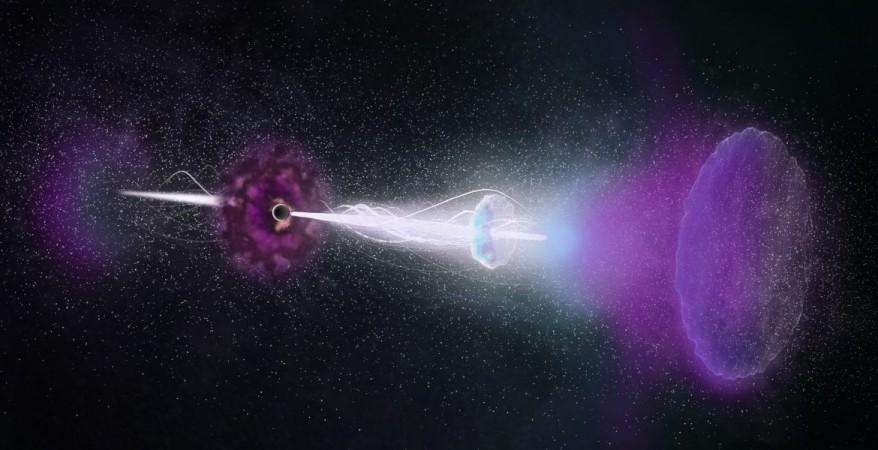
The Oh-My-God or OMG particle is one of the most high energy, fast-moving particles ever to be detected and recorded by humans. Detected first in 1991, it was a particle moving at almost the speed of light. To be more precise, it was going at about "99.99999999999999999999951 percent" the speed of light. Till now, scientists have only detected less than a hundred OMG particles.
Called ultra-high-energy cosmic rays, they are known to hit the Earth at the rate of once per square km per year. Even though that is not very often, an astrophysicist at The Ohio State University and the chief scientist at COSI science center, Paul Sutter, explained that the rays are not actually rays, but mostly physical particles like electrons and protons. However, they can also occasionally be heavier, like the nuclei of iron or helium.
Considering where these particles are coming from, physicists are yet to pinpoint their exact origin. Unlike photons, these particles are not always at light speed, so they need to be accelerated to over 99 percent speed of light. Hence, Sutter notes that OMG particle generators will actually need powerful magnetic fields.
Of the many events that are both powerful and heavily magnetised, there are a few events that stand out like Supernovas. They are among the most powerful explosions that happen quite regularly in the cosmos. They have the particles, energy and the magnetic fields that could kickstart OMG particles. However, they lack the power, says Sutter. Their power is insufficient to accelerate a particle within the range of light speed.
OMG particles travel really fast and at that speed, Earth's entire diameter will appear to be about 0.0399 mm.
Another possible candidate is a gamma-ray burst (GRB), but the mix is just not right in terms of the physics involved, Sutter notes. The actual cause of a GRB is also yet to be conclusively found out.
Active Galactic Nuclei (AGN) could be the source of the OMG particle, considered the most energetic "engines" in the universe. These bodies are the supermassive black holes that are found in the centre of galaxies, but even they are far away. Earth is not within firing range of any AGNs, says Sutter.
When travelling at interstellar or even intergalactic distances, any particle will invariably run into the microwave background. They will also interact with any particle travelling at such high speeds. There is a distance limit on any particle travelling through the universe- 160 million light years, so AGNs, even if they do produce OMG particles are unlikely to reach Earth, says Sutter.
Putting all the conditions together, the entire Milky Way is out. There is nothing powerful enough in this galaxy to generate OMGs.
The final answer is that scientists do not know. As of now, there is too little in terms of observations made, and the conditions to create OMGs are too specific. As the number of observations increase and the astrophysicists are able to gather more data, maybe in a few years from now, mystery of the high energy cosmic rays will finally be solved.








